
Students will use a model of the solar system to demonstrate the barycenter that exists between the earth and the sun.
- Subject:
- Earth Science
- Science
- Material Type:
- Activity/Lab
- Author:
- William Allred
- Carrie Robledo
- Date Added:
- 05/19/2021

Students will use a model of the solar system to demonstrate the barycenter that exists between the earth and the sun.

Students will use a model of the solar system to demonstrate rotation, revolution, kepler’s laws, Newton's laws, precession, nutation, seasons or tides.
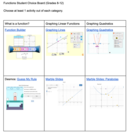
Students will complete a Functions Choice Board they will have two options from each section. What is a function, graphing linear functions and Graphing Quadratic.

F-IF.7: Analyze linear, exponential, and quadratic functions by generating different representations, by hand in simple cases and using technology for more complicated cases, to show key features, including: domain and range; rate of change; intercepts; intervals where the function is increasing, decreasing, positive, or negative; maximums and minimums; and end behavior.

This is a unit length multi-learning style project that teaches the theorems and properties of Circles for the NC Math 3 curriculum. It includes hands on manipulatives using Exploragons, Digital Explorations in Geogebra, and a differentiating set of homework exercises through CK12.org.

Students will explore the equations of circles, their transformations, and derivation from the Pythagorean Theorem. Students will create circles on graph paper with specified center, radius, and containing 3 points. Students will determine the best location for a hospital to best serve the needs of Moore County.

A starting line and “target line” will be laid out on the floor of the activity area. Students will program their robots to traverse the perimeter of a triangle of specified dimensions. Students will have to use the Laws of Sines and Cosines to calculate the speed, direction, and travel time for each leg of their robot’s travel.

Students will resolve vectors into x and y-components, combine these values to determine the components of the resultant, and determine the magnitude and direction of the resultant.

Students will discover a cultural tradition of many Spanish speaking countries, compare it to cultural conventions in the United States, and create a tangible, memorable product to commemorate the learning and growth.

Students will create an artifact using Tinkercad and a 3D printer. The artifact must be a product that distinctly relates to their subject. orStudents will create a holographic presentation using Cospace and Merge Cube. The hologram will be representative of something distinct to their subject matter.

Students will create a digital presentation of their topic. Areas highlighted will be Human-Environment Interaction, Politics, Economics, Culture (to include Religion) and Technology. Students will also discuss the important points of the previously created timeline.

Students will create a digital, interactive timeline that students can use to highlight the rise, apogee, and decline/fall of their topic.

To discover, understand, and compare/contrast cultural conventions in the target culture with students’ culture.

In this lesson students will get to work with data for different countries that involve life expectancy and the number of people per television. This lesson focuses on students understanding correlation and causation, and that correlation does not imply causation. Previously, students would have had experiences with verbally and graphically exploring data and working with lines of best fit. The data in this example is older but still can provide for rich discussion and investigation.
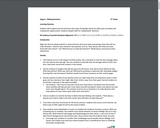
Month-by-Month activities that will get 9th graders ready for the future.
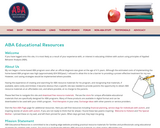
ABA Educational Resources

In this interactive, students click on a letter to see it in uppercase and lowercase. They click on the letter again to hear its sound and words associated with that sound.
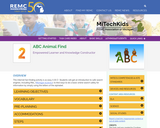
This Internet fact finding activity is as easy A-B-C! Students will get an introduction to safe search engines, including MeL, (Michigan e-Library.org), to find ways to do a basic online search safely for information by simply using the letters of the alphabet.
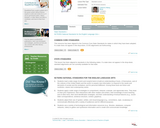
Students will read a text and then they will demonstrate their new vocabulary knowledge through appropriate use of the words in context and with accompanying illustrations. They will create of an ABC book through individual and small-group activities. Students will take an active role in their learning by identifying the content area vocabulary they want to research. This lesson can be implemented in any content classroom.

In this activity students identify the different relationships that can be found in a community and create a class Community ABC Book.